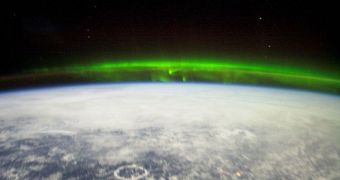Project Aether: Aurora is a research initiative meant to provide scientists with the chance to study northern lights from high latitudes. The two-week project is currently taking place in Alaska and is scheduled to conclude on April 13.
In order to get the best views possible of the light shows, scientists with the research team are lofting weather balloons into the night sky, each outfitted with scientific instruments designed to measure various parameters of the displays.
The amazing atmospheric phenomenon is most intense when clouds of highly-charged particles emanating from the Sun strike Earth's protective magnetic layer, and then start to flow alongside our planet's magnetic field lines.
The project has three main objectives. First and foremost, experts want to learn more about aurora borealis in general. Secondly, they want to test a new series of scientific equipment that have never been tested before. The third objective is to get more children interested in STEM.
This area of education, whose name comes from science, technology, engineering and math, is of very little interest to students today, and the United States is beginning to feel the impacts of having fewer specialists in these areas.
“We think that the excitement of the whole expedition, and the drama involved in completing this cutting-edge science, helps play into the motivation to go into the STEM fields,” says Ben Longmier.
The expert, who was the principal investigator on the new project, holds an appointment as a physicist at the University of Houston, and is also a chief research scientist at the Ad Astra Rocket Company.
Expedition 30 crew member and NASA astronaut, Don Pettit, is also coordinating with scientists on the ground, from aboard the International Space Station (ISS), Space reports.
If the orbital outpost, currently 240 miles (386 kilometers) above the surface of the planet, happens to fly over Fairbanks, Alaska, at the same time as researchers are flying their balloons, then images from all sources are put together to create impressive, in-depth views of these amazing events.

 14 DAY TRIAL //
14 DAY TRIAL //